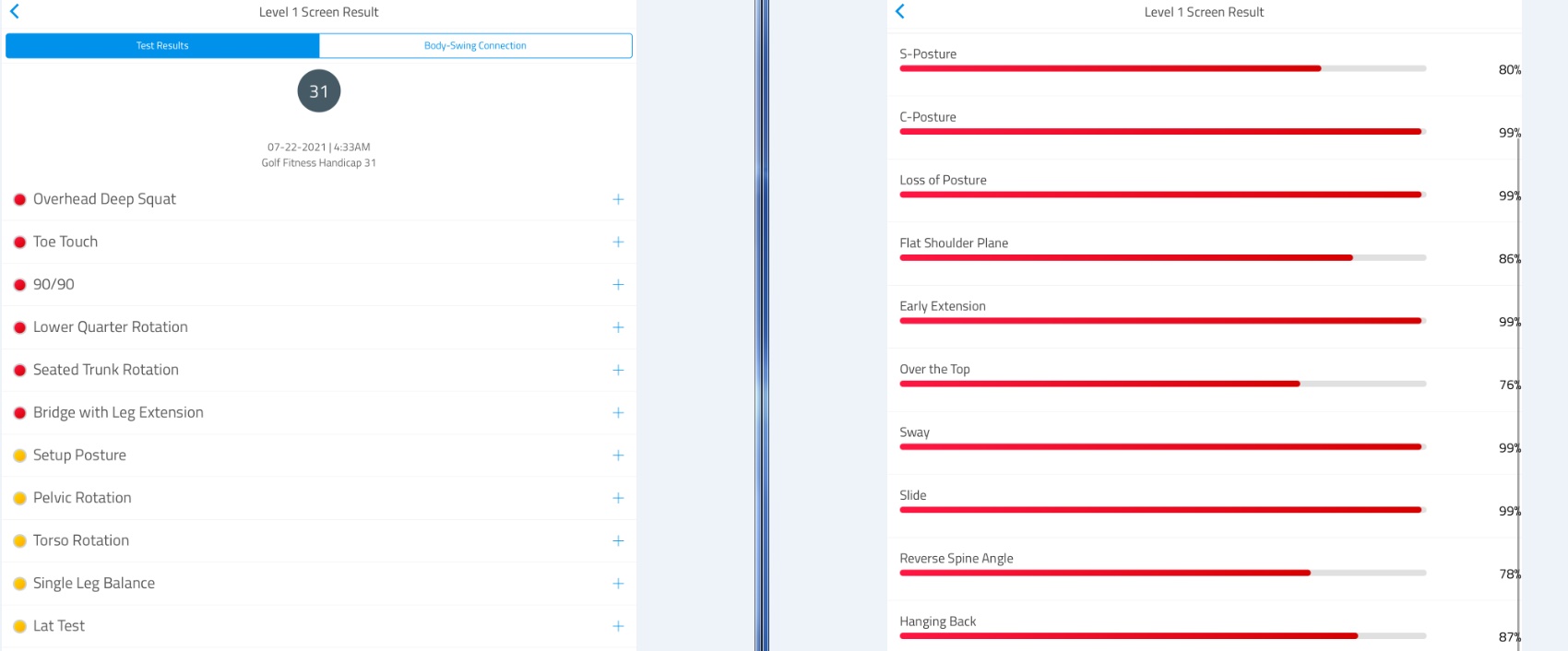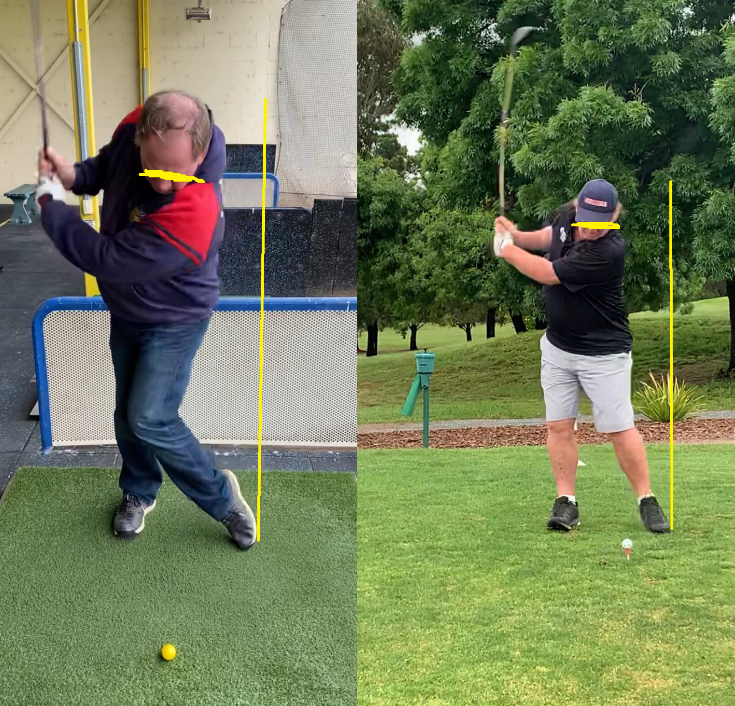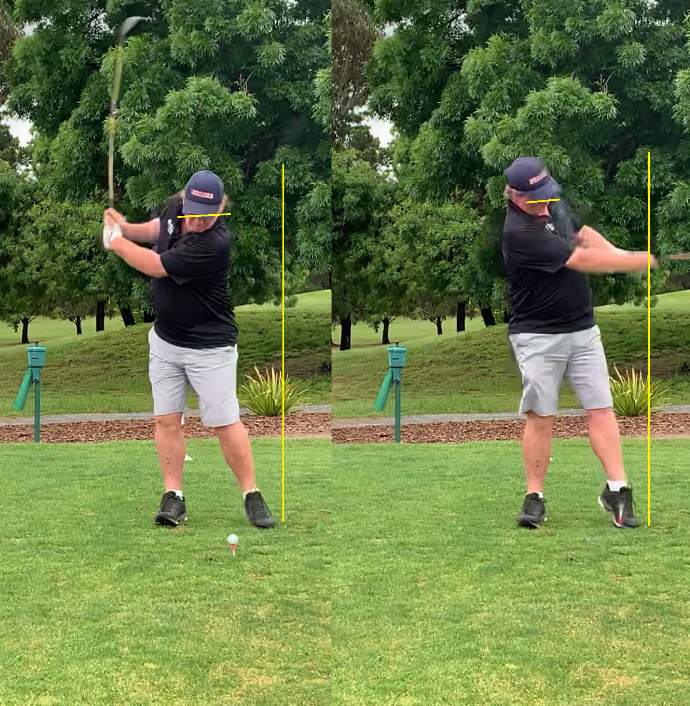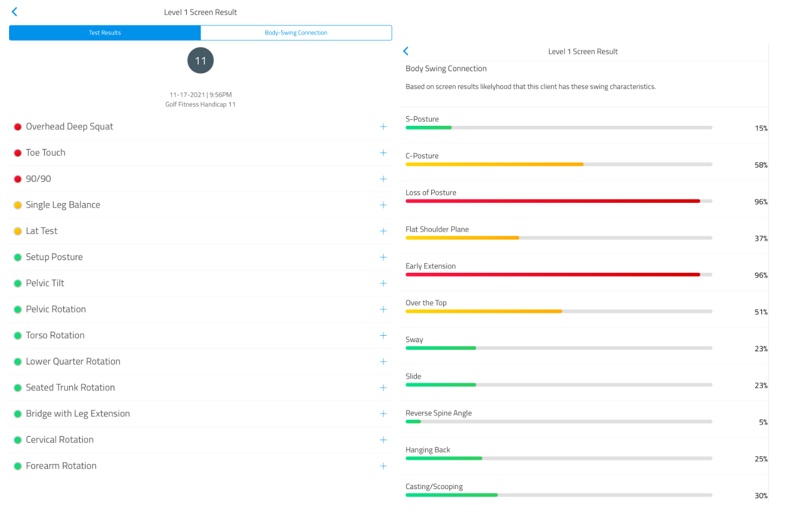
Below is a case study of a Titleist Performance Institute, medical professional golf assessment run by Sam Jeffery. What to read more about our golf services? Then do so here, or read more about the Titleist Performance Institute assessments here.
Want to book an assessment? Click here to book.
A 60 year old male with a handicap of 28.1 underwent a physiotherapy led Titleist Performance Institute (TPI) golf assessment to identify any weaknesses or strengths in relation to his body and golf swing.
Prior to the screening the client reported the following problems:
- Left shoulder pain
- Lower back soreness
- Stiff hips
The client plays golf both socially and in competitions as he is a member at a local course. Typically he plays 3-4 occasions per week and can have some issues with generalised soreness following golf.
The client identified that his goals were to take 5 strokes off his handicap within 1 year and reduce his risk of injury as he plans to play golf multiple times per week for the next 20 years. He further noted that he thought he should be able to hit the ball further than he does but has felt limited. He self-reported an average driver distance of 180-190m.
TPI Initial Assessment
The assessment revealed that there were multiple issues likely limiting him with his golf swing / golf game and also opening him up to risk of pain / injury. Some of these limitations involved thoracic spine rotation (ability to rotate torso independent of hips), gluteal weakness, bilateral shoulder range of motion deficits and reduced balance. Conversely, he showed great mobility in the wrists and elbows as well as control of his hips moving from anterior to posterior. After analysing the results of the assessment and viewing the video of his golf swing we identified the likely contributing factors to some of the negative swing characteristics he showed. With this information few then devised a home exercise program with the goal of improving some of the limitations likely negatively impacting his swing, and increasing his risk of pain and injury as a result of playing golf.
The results of the client’s physical assessment predicted the following issues:
- Poor setup posture
- Loss of posture / early extension through swing
- Poor weight shift
- Inability to separate his torso and hips in the downswing
These characteristics commonly can show up in the swing as ‘S’ posture, loss of posture, early extension, hanging back and sway. Given some of the physical limitations are simply due to age and loss of range in a chronically injured joint (left shoulder) we selected 4 of the most changeable limitations likely causing the most detriment to performance. Using an exercise application both the client and I agreed that he had enough time and was willing to complete a program involving 8 exercises that we updated every 2 weeks as he progressed. He attended 6 appointments over a 14 week period, with his physical screening assessment repeated at the 8 and 14 weeks mark. The only other homework given was for him was to record 20 driver distances from week 6 onwards to gauge if any distance improvements were occurring (instructed to only count those that hit the fairway no matter if not struck completely clean).
TPI Assessment Week 8
At the 8 week mark of progressive exercise the TPI screen yielded a health handicap of 16 (31 at initial assessment). The improvements were made largely in gluteal / hip strength, hip mobility and setup posture. There had been no change in handicap at this time as no competitive golf was being played due to COVID, however using a score tracking app the client had noted that breaking 100 was typically a good game for him and he had been below 95 strokes 3x out of the last 5 rounds. At this time the program was modified to give more advanced exercises targeting powerful torso rotations and balance, which were still showing room for improvement.
On the clients second assessment there were clear changes and improvements in the assessment, health handicap and likely swing characteristics. The exercises completed diligently by the client showed up in the re-assessment with major changes shown in physical tests passed as well as positive effects on his swing. The biggest changes showed up in reduction in S-posture at setup as well as major reduction hanging back and modest reduction in sway.
“A sway is any excessive lower body lateral movement away from the target during the backswing that forces the weight to the outside of the back foot. This swing characteristic makes it very difficult to develop a proper weight shift during transition and the downswing” – TPI.com
This lines up perfectly with the next characteristic described as hanging back. Often both of these issues occur in tandem. The hanging back characteristic is described as:
“When a golfer does not shift their weight correctly back onto their front side on the downswing. Golfers tend to hang back on their back leg and spine through impact. This usually results in a lack of power and the inability to create a consistent strike on the golf ball.” – TPI.com
Again this is very clear in the photos of the client’s swing which can be seen below (first photo prior to the assessment, second photo 6 weeks into the program). The first picture shows that in the lead leg. Only the front of the golfer’s foot has stayed connected to the ground at the top of the backswing compared to the second photo where he is much more attached to the ground. This is common in golfer’s who display the hanging back characteristic and means he is unable to effectively transfer his power into his front foot.
In the picture below is the difference in the clients swing at the top of backswing (the left being prior to program, right afterwards). Comparatively the client now has more torso rotation which allows the club to come further back as opposed to directly up which will create more potential for power. Outlined below shows that the client has a considerable amount of weight on his back foot however the work to improve that weight shift is in progress. The primary outcome of attacking this issue will be more consistent and powerful striking of the ball off the tee with less risk of a snap hook.
Below is a comparison between the top of the back swing and just through ball contact. It shows the hanging back characteristic has not been corrected yet, weight is on his back foot in both instances as he should be moving towards the yellow line through impact. However, the sway has been largely eliminated as the weight is now even on the back foot at the top of the backswing (as it should be) as opposed to all on the outside of the back foot. The second picture is to illustrate where his weight is at the top of his backswing and just after contact (again not moving towards the line through downswing). This is important to note that just because the re-assessment shows that the hanging back characteristic is less likely, video is needed to confirm if this has indeed been addressed. As this is still occurring further focus in the strength program is needed to correct the issue.
Final Assessment and Future
At 14 weeks the TPI screen as completed again and a health handicap of 11 was determined (20 less than initial). An average of the 20 drives was taken and averaged out to 219m – 30-40m increase from prior to strength and mobility based program. The client was particularly diligent with the strength and mobility program over the 14 week period and separate to golf performance reported feeling great and moving well with other exercise as well as golf. Additionally, with competitive golf returning, 5 of his last 8 rounds are now on his handicap indicating an improvement in performance. His GA handicap has dropped 1.3 strokes in just 8 games. Given the success of the program thus far, the clients exercises were progressed again with the major focus now focussing on keeping his front foot connected and transferring his weight forward through swing. The final assessment showed that the client still has reduced left leg (lead leg) balance, and the patient reported subjectively feeling weaker in his right gluteal area with strength work. This again matches the video as reduced lead leg balance will discourage powerful weight transfer as you are not confident you can control the weight. It is also shown that a weak glute in the rear leg will not allow you to effectively push through the ground and transfer your weight into the lead leg. With this information the clients program was update to focus on these two issues in particular and a review to be completed in 6 weeks.
Handicap movement and individual driver distances recorded:
22/07/2021 – Golf Assessment health handicap 31, GA 28.1
04/10/2021 – Golf Assessment health handicap 16, GA 28.1 (no competition play)
17/11/2021 – Golf Assessment health handicap 11, GA 26.8 (8 rounds of comp play – 5 of last 8 rounds now on handicap)
20 recorded driver distances: 190m , 200m , 242m , 233m , 230m , 230m , 220m , 230m , 210m, 240m , 240m , 215m , 215m , 190m , 240m , 230m , 245m , 240m , 250m , 240m
Want to book an assessment? Click here to book.







